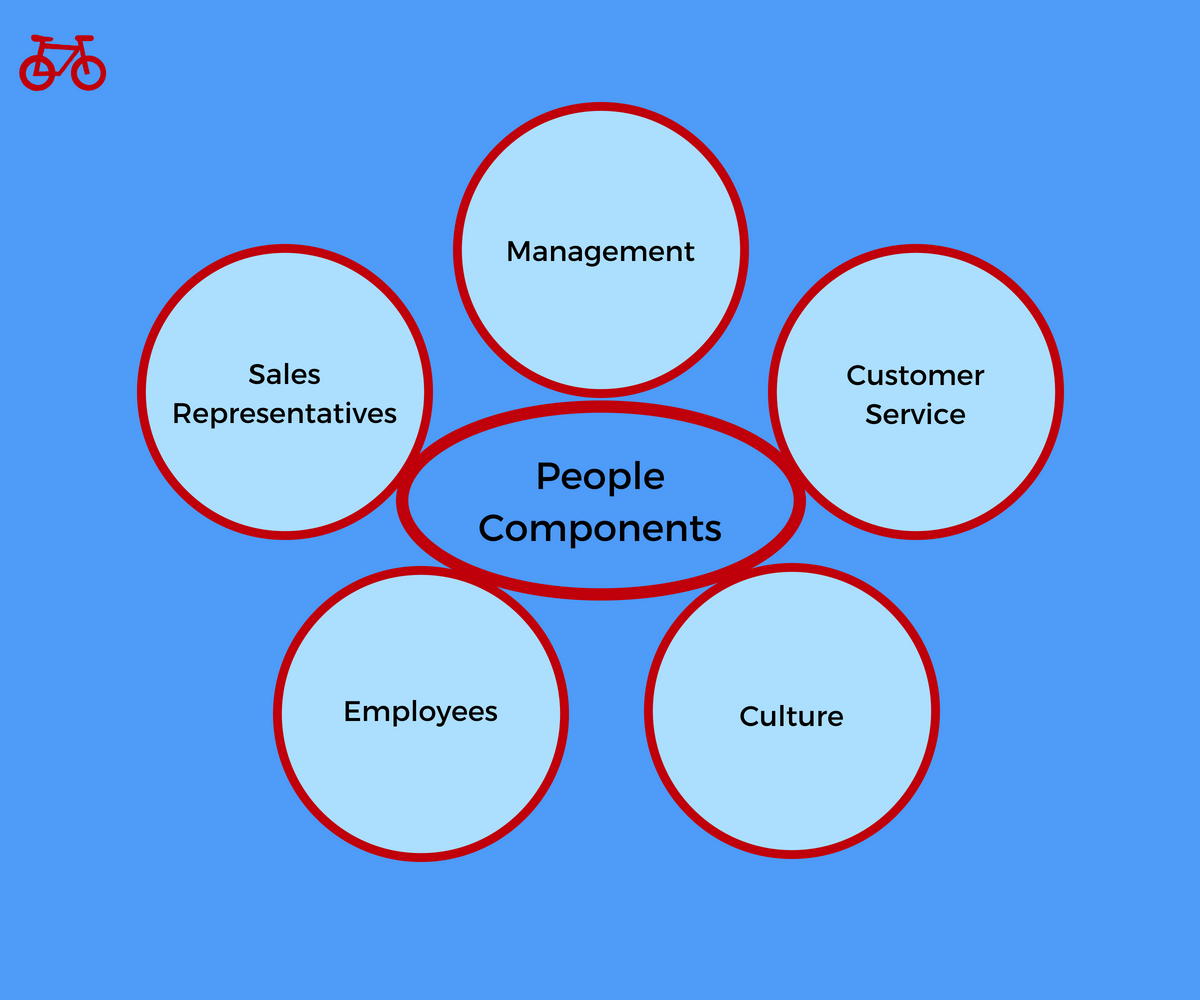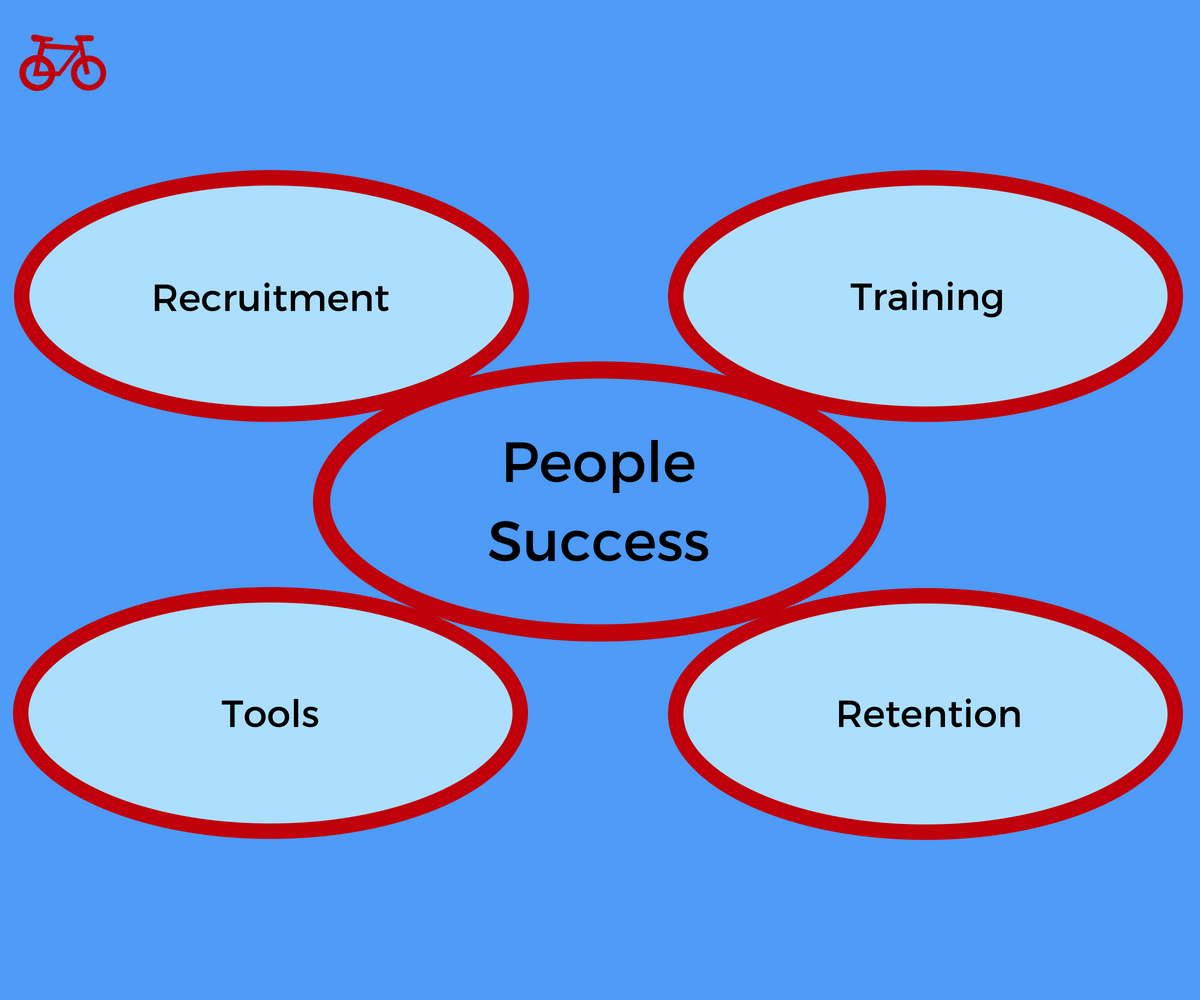The people that interact with your customers are critical to your business success. That is why in the 7Ps of marketing, people get its own component.
The people component focuses marketing on creating the right team of people to interact with customers. These are the individuals who will convey your brand to your customers. It becomes a critical component with services-based products. But, as companies become more transparent, it can be used in companies with all type of products.
Here, we discuss an overview of the people component of the marketing mix.
What is People?
People, in the context of the marketing mix, are all the people within your organization. This includes employees, management, customer service, and the overall company culture.
The people component of the marketing mix encompasses people within the entire organization. But, the focus tends to be on the customer centric employees of the company. This is usually the outward facing employees, such as sales representatives, customer service, and management.
The most common framework where people is included is in the service marketing mix. This is applying the marketing mix to service companies, where people are an essential component of the product.
But, using this component of the 7Ps marketing mix is not exclusive to service products. All companies can use the people component of the marketing mix as a competitive advantage.
Components of People
The people within an organization can be the organizations competitive advantage. This is not only essential for a service-based business, but for all businesses.
That is why marketers have to be concerned with the people that are within the organization. That is the management, sales representatives, and customer service. These are the most prominent customer centric roles. Or, they influence the customer centric roles.
Here are some of the main components of people within the marketing mix.

Management
The first component that drives the rest of the organization is management. Management can set the culture of the organization, it can set the company’s priorities, and it leads the organization.
Management is crucial as it will shape how the company, as a whole, views its customers. This view then permeates through the customer facing roles within a company.
Thus, when looking at the people component of the marketing mix, addressing management is at the forefront. It can dictate how the organization will treat its customers.
Sales Representatives
Sales Representatives are the first contact many new customers have with an organization.
They are tasked with bringing in new customers through their prospecting. Thus, as the first contact a customer is having with your organization, the customers perception can be shaped by these initial interactions. Either good or bad.
Two ways to address the sales representative component is to hire the right sales representatives. Then, train them. Both situations need to ensure that the sales representatives mix with the culture of the company and that they interact with customers the way the organization intends.
Addressing the Sales Representatives is a crucial part in the people component of the marketing mix. Sales Representatives are responsible for bringing customers into the organization.
Customer Service
For many businesses, Customer Service can be another competitive advantage. It can be around the clock availability, providing easy access to an agent, or having a Customer Service team that solves the customers problems.
The Customer Service aspect of an organization can move customers from just using a product to loving a product. This can increase retention, which existing customers can be an effective channel for growth.
Customer Service can also contribute to bringing new customers into the business. Part of a company’s value proposition can be Customer Service. For complex products, this can be essential.
Treating Customer Service as a marketable asset can contribute to increased customer retention and new customers. Making a conscious effort to address this component of people can be a profitable decision.
Employees
Although Management, Sales Representative, and Customer Service are all employees, there is the part of the company that is essential to the business, but not customer facing. This is the employee component of people.
Employees and how they interact within the organization can impact the marketing and people component. Great employees – and happy employees – can permeate outside the organization effecting customers and prospects perceptions.
Alternatively, toxic employees can spread throughout an organization. This can begin to affect the customer facing roles within an organization.
Addressing employees is important to maintaining a healthy organization and one that focuses on customers.
Culture
The final component of people, which is largely a combination of all the other components is culture. An organizations culture can affect every aspect of the business.
A company culture is everything. It is how the organization operates internally. How employees and colleagues treat each other. And how the company treats and views customers.
Thus, ensuring the company culture helps to reflect the company values is worth being concerned about.
The various components of people can contribute to driving the marketing message for customers and prospects. Addressing people can be a competitive advantage for your business.
Making People a Success
The company and systems that are put into place regarding people within the organization are the largest determining factors of making this marketing mix component a success.
There are a few areas to address to increase the chances of this component succeeding. The four areas of focus are recruitment, training, tools, and retention. We will look at each in detail below.

Recruitment
The first step in making the people component a success is recruiting and hiring the right people. This may seem like a bit of a cliché, but it is true. It is no different than collecting data. If there is garbage in, then it’s garbage out.
This can be applied to recruitment in your organization. Getting the right people in makes getting the right product out more efficient. It also lends itself to the building of the right processes.
Building a successful people component of the marketing mix begins with recruitment. But, that is just one part of being successful.
Training
Once the right people have been recruited, it is time to train them. Training is essential. Both in the onboarding new employees process, as well as ongoing.
It provides employees with the knowledge to solve the company’s problems. Also, it gives employees the skills to feel confident in their positions. It provides a framework of challenge, yet the challenge isn’t so insurmountable as to force apathy. This is a delicate balance, but one that can be worked towards with an understanding of training.
Providing training, both initial and ongoing, is essential to developing the people component of the marketing mix.
Tools
Having the right tools makes getting the job done possible. Tools not only make the job possible, but they also make the job easier.
If we are thinking about steps in a process, we have recruited the right people, trained them so they understand the process. Then, we can add the right tools. This makes getting the job done in a productive manner possible.
The other component to this is ensuring that your people are trained on the tools they are using. This comes back to the training component. In particular, the ongoing training.
Ensuring your team has the right tools, and are trained on those tools to get the job done, is one more step in building a successful people component of the marketing mix.
Retention
Every time an organization has to recruit new people it costs time and money. This can be due to expansion and needing more team members. Or, it can be replacement. In either case, you do not want to have to do this process in redundancy.
Thus, retention is an important piece of the people component. Retaining the best employees, who significantly contribute to your bottom line. Or, the reduction of employee turnover, which is a reduction in costs.
In either situation, retaining people so they become a profitable component to the marketing mix is critical.
The people component of the marketing mix is a popular component of the service marketing mix. But, it does have a place in the general marketing mix conversation. It can be a competitive advantage. It can be leveraged. And companies can be good or bad at it. Thus, considering this as a component to marketing is a worthwhile exercise.
